Giuseppe Sacconi plans to transform the central area into a large secular altar dedicated to the nation and its values
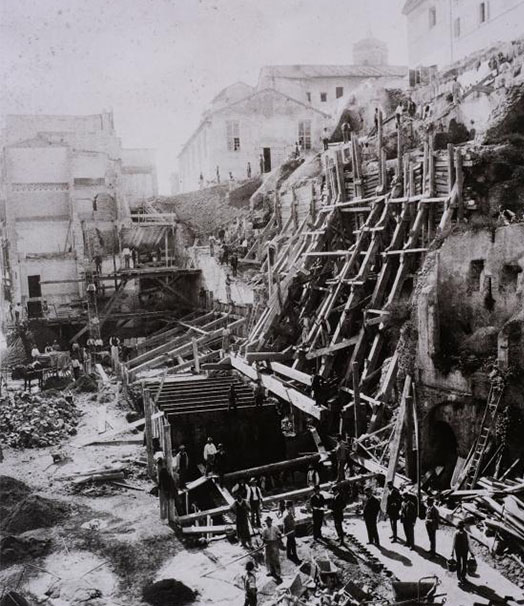
Giuseppe Sacconi, appointed as construction manager of the Vittoriano at the end of 1884, soon found himself faced with a series of difficulties, which forced him to intervene heavily on the project which had won a few months earlier.
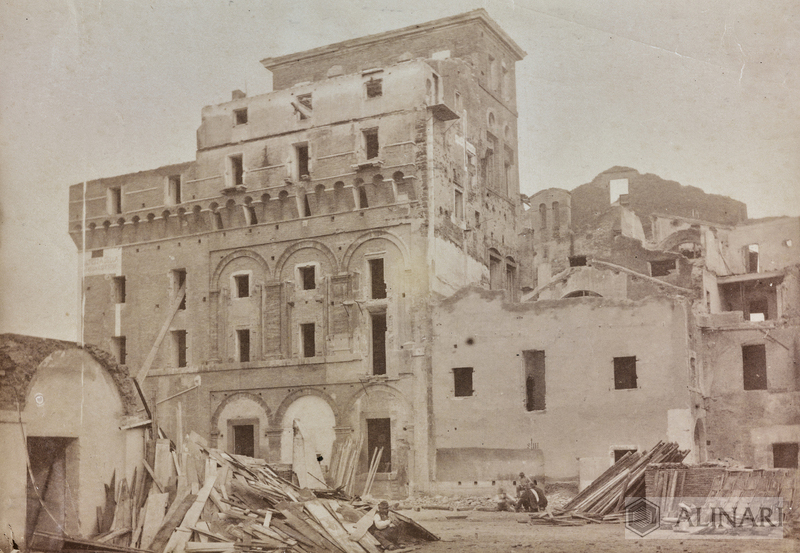
The Convent of Santa Maria in Ara Coeli (Saint Mary of the Altar of Heaven) being demolished as part of the changes made to the Piazza Venezia area
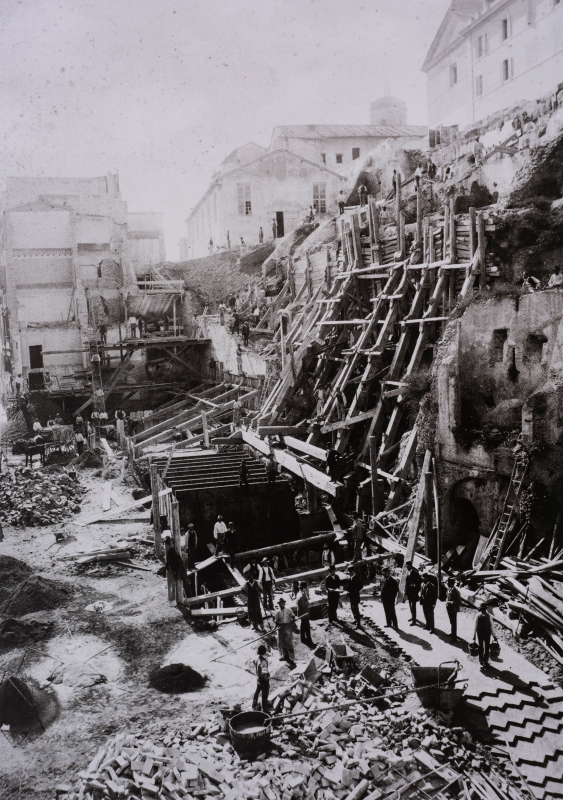
Demolition on the Capitoline Hill, circa 1885
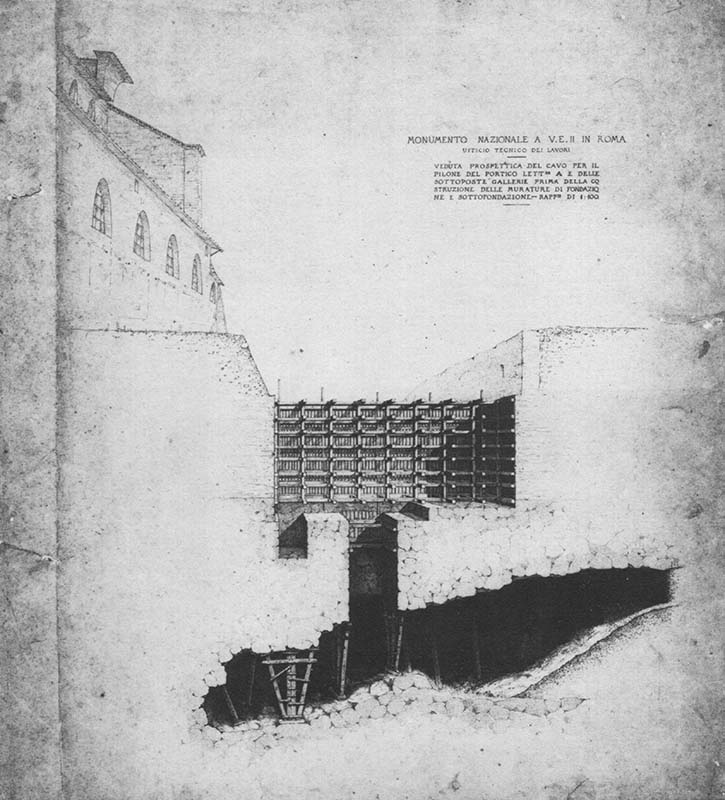
Geological obstacles met by Sacconi: perspective view of the dig site for the pier of the portico and its foundations
This rethinking phase also affected the iconographic program of the reliefs. Putting aside the idea of historical depictions inspired by the Risorgimento, Sacconi’s thoughts turned towards an allegorical setting. The change of course was already clear in the project presented on the occasion of the visit to the construction site by Umberto I, which took place on 4th June 1890.
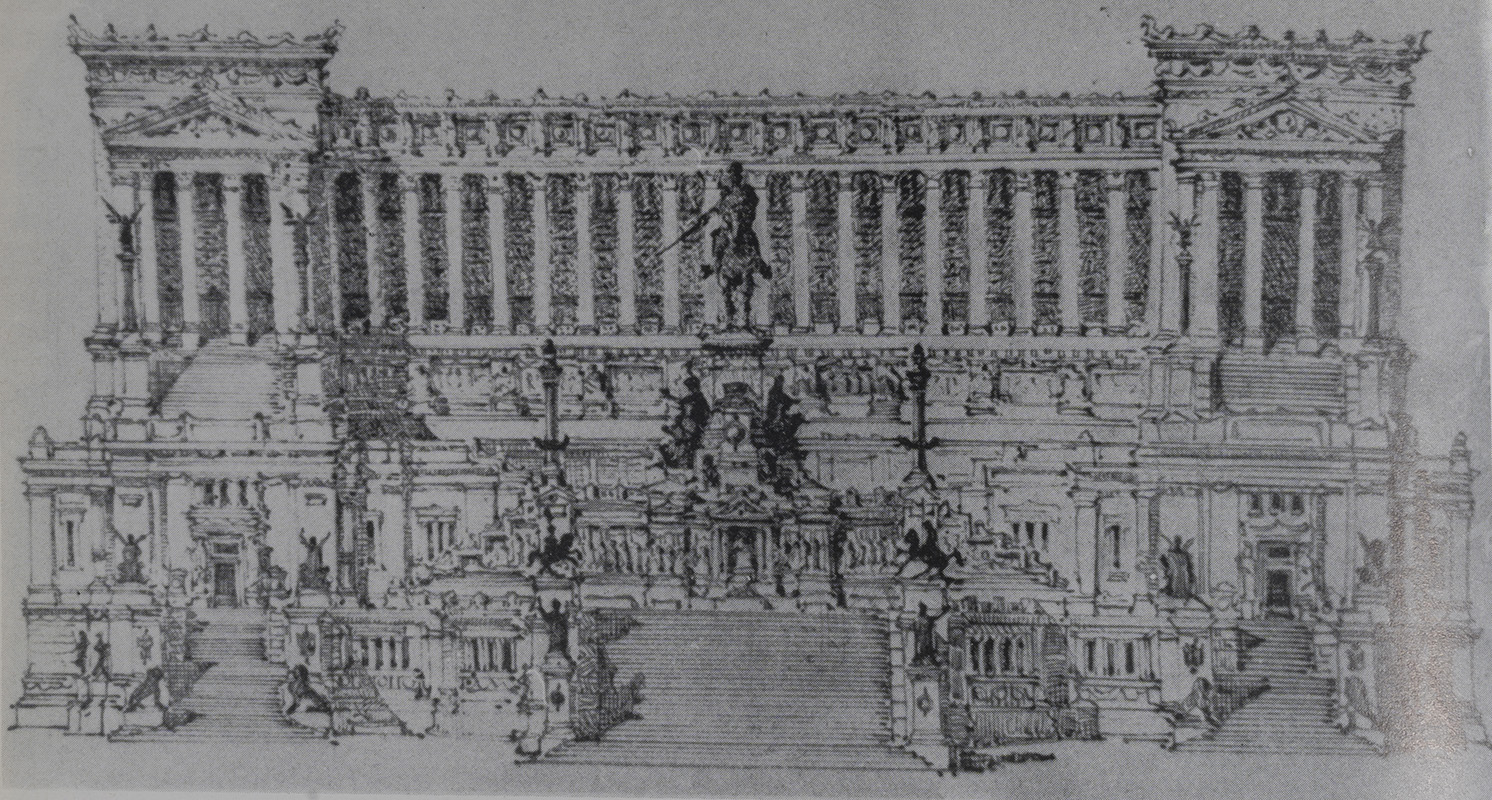
The second design for the Monument to Victor Emmanuel II created by Giuseppe Sacconi in preparation for King Umberto I's visit to the work yard in June 1890
Whilst thinking about the functions of the central area and about the decorative apparatus, Giuseppe Sacconi arrived at the idea of making it an Altar of the Fatherland. The origin was the French model of the "autels de la Patrie": characteristic of revolutionary France - the first dated back to 1792 - the more than 36,000 "autels" represented symbols of the nation and its values, strictly civil and secular.
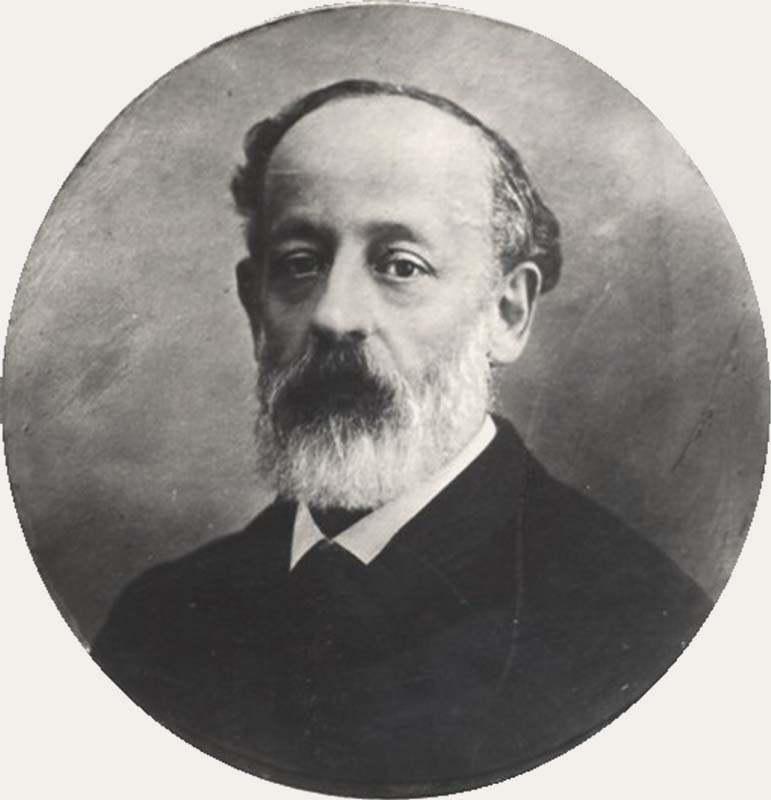
Portrait of Pasquale Villari
In the Vittoriano, the French model was developed through the suggestions of the republican philosopher Giovanni Bovio (1837-1903) and of historian Pasquale Villari (1827-1917), achieving the form of a frieze in relief depicting the illustrious people who had forerun the Risorgimento. This concept also emerges in the report delivered by Sacconi to King Victor Emmanuel III in January 1905.